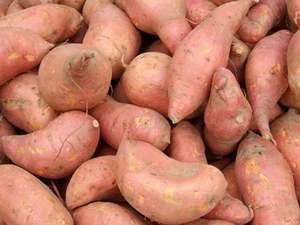 Mozambique's Agricultural Research Institute (IIAM) is developing new varieties of sweet potato that have better nutrition, improved drought resistance and higher yields than the types currently grown in the country. Funding for the research comes from the Alliance for a Green Revolution in Africa (AGRA).
Mozambique's Agricultural Research Institute (IIAM) is developing new varieties of sweet potato that have better nutrition, improved drought resistance and higher yields than the types currently grown in the country. Funding for the research comes from the Alliance for a Green Revolution in Africa (AGRA).IIAM's Jose Ricardo told AIM, “under the project financed by AGRA, we are looking at nine varieties of orange-fleshed sweet potato that have better drought resistance and an increased yield of fifteen tonnes per hectare”. In Mozambique, sweet potato is the third most important crop for small farmers - after maize and cassava. It is grown by two million farmers for the roots and leaves.
IIAM has carried out research to improve yields over many years. In 2000, it introduced eight varieties of sweet potato. However, these only produced three tonnes per hectare.
Consequently, more research was undertaken in 2005. This resulted in the release of eleven new varieties in 2011 with yields of eight tonnes per hectare. Since then, IIAM has taken part in international research with AGRA and the International Potato Centre.
Ricardo pointed out “productivity in South Africa reaches yields of fifty tonnes per hectare, using fertilisers and irrigation”.





